How to teach your dog to leash?
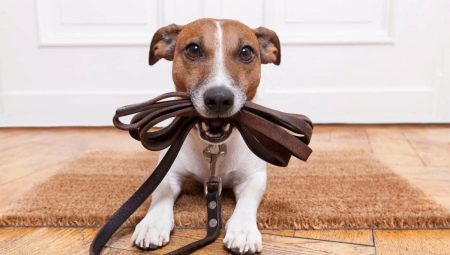
When a dog appears at home, then in no case should it be limited by the walls of a room or apartment and not be given the opportunity to learn about the world around it. All animals are very curious and find a lot of interesting things in nature, besides, many of the nutrients necessary for a pet should be looked for on the street. But letting the pet out alone for a walk is unsafe both for others, who can scare the dog, and it may react incorrectly, and for the puppy himself.
A particular danger is a city with constant traffic, cruel people, unpredictable children and a large number of places where the puppy should not get - these are sewers, construction sites, markets, highways and much more. Hence it follows that it is best to introduce your pet to nature gradually and only with personal accompaniment, for which you need to teach the dog to a leash.

Suitable age
Many begin to accustom the dog to the leash on their own, not paying attention to any recommendations. More often than not, in this case, the process of accustoming takes a longer time or is completely unsuccessful. The surest and most convenient option is to contact a dog handler or trainer, but if such a possibility does not exist, then before you start teaching your puppy to the leash yourself, you should familiarize yourself with the basic rules.
- In no case should your pet have negative associations with the chosen accessory or the process of leash training itself. Otherwise, everything will become more complicated, and the dog will react to your lessons as incorrectly as possible, and the process in this case will be very delayed or will not lead to a positive result at all.
- Patience and perseverance are important characteristics that a person must have in order for the process to be favorable for everyone.
- The training process should not be a burden for you or your pet. You should present everything in the format of a game, constantly show affection, care and communicate with the puppy.
- Do not delay the beginning of the training, because the older the pet, the more difficult it will be to teach him something. It is best to start between 1.5 and 3 months of age, allowing the dog to get used to the new accessories first.
Different dogs grow in their own way, and someone in 3 months may already have a huge dog that is poorly obedient and does not lend itself to training. That's why The age at which it is best to start leash training for individual dogs varies, but many believe 1.5 months is the ideal time.
At this age, the dog already understands many things well, but at the same time it is still easy to train.
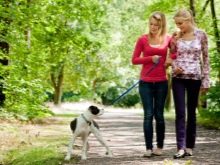


Choice of accessories
In order for the learning process to proceed quickly and not cause negative emotions in anyone, in addition to the approach to training and the main aspects of behavior with a puppy, you should also pay attention to the choice of accessories. It is very important to choose not threatening and repulsive collar and leash, but favorable and not very difficult options.so that the puppy does not feel a special load on the neck - this will play a role in training.
Collar selection
The main criteria for choosing a collar are length, thickness, material, accessories on the collar (spikes, talismans, key rings, keys, etc.). You should choose a collar that is the size for your pet so that it is not heavy or constantly making some kind of noise. In this case, several types can be distinguished.
- Everyday. Used during walks and trips to the vet. The most common type, these collars are usually made of leather and are durable. Suitable for all breeds, but you should choose an option depending on the height, weight and necessary for the task, as well as on the type of attachment.
- Exhibition. Used for dog shows or going to similar exhibitions as spectators. They are made in the form of noose chains and look quite impressive. In reliability they are significantly inferior to everyday collars.
- For training. It is also called "strict collar" - not a very humane option, but it is he who is often used when working with animals at a professional level - where the discipline of the animal is required. A collar in the form of a stranglehold, which restrains the animal and when the animal tries to pull the leash in the wrong place, the loop is tightened. In addition, there are usually thorns on the inside, which give the dog unpleasant sensations as a result of disobedience. Also, sometimes in training, other inhumane collars are used - electric, their effect is also unpleasant for the pet.
- Decorative. They are used mainly for beauty and walks for some evenings or meetings. Most often used for small dogs.
- For traveling. Collar required for long journeys or movements. It is often used for breeds of tall and strong dogs to hold back their onslaught. Most often it consists of leather. It is wide and heavy with strong metal mounts.
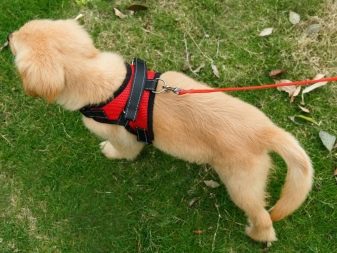
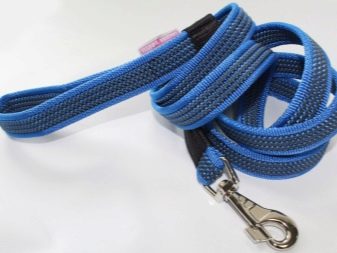
It should be remembered that the collar should not be tight and cause discomfort to the pet or, conversely, weakened, so that during training or walking it could fly off the pet.
It will be correct after you put the collar on the dog, try to stick it 2 fingers between pet's neck and collar... If everything worked out, then the accessory is fixed correctly.
Leash selection
The main criteria for choosing a leash are length, thickness and material. The leash should not cause discomfort to both the pet and the owner, so it should also be chosen correctly. There are several types of leash that are tailored to fit your pet.
- Short (30 cm to 2 meters)... It is often purchased for dogs of small breeds or those dogs that do not very often move away from the owner, as well as for puppies. This is not a leash for walking.
- Medium (2 to 5 meters)... Used for short walks, grocery shopping or vet visits.
- Long (5 to 8 meters)... Used for walking in the park, suitable for all breeds of dogs and even large ones. The specific choice of this or that leash depends on the material and width.
- Roulette. The most frequently used option because it is very convenient. The length is controlled and varies from 0 to 20 meters. It is selected depending on the weight of the dogs and the required tasks.
The choice of accessories for your pet is a very important step, and you should focus on it. By choosing the right ammunition, taking into account the age of the pet and your time that you can spend with your puppy, you can quickly and efficiently train your pet to a collar and leash.
The main thing is not to rush, be patient, play with your pet, listen to the advice of professionals and learn about the rules of leash training.
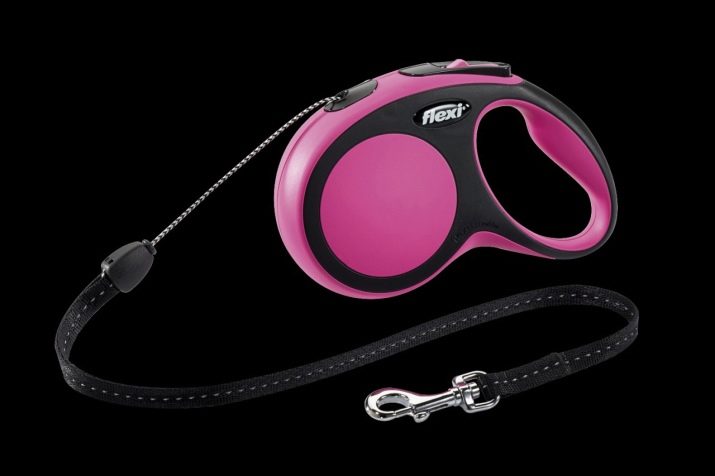
The ways
There are various ways to train a dog for a collar and leash, the choice of one or another option depends mainly on your desire and the available time in stock. There are two main ways.
- Turning to professionals... The most reliable, quick and high-quality option is to contact the dog handlers or trainers. It is used to train an adult dog or puppy if you are pressed for time, lack of skills and desire, or maybe you just do not know where to start.
- Selfeducation... Used for leash training for puppies or adult dogs of easily trainable breeds. It requires time, desire and the necessary skills.
For learning it is best to use training leash, the main principle is gradual training. You should start with training at home, and only after that take the pet out into the street, so it will turn out to gradually transfer the dog from a familiar environment to something new.
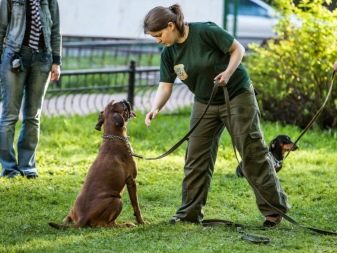
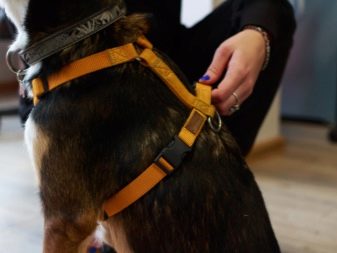
Training rules
The process of accustoming to a collar can take a week or even two, here you should be patient and get carried away with this process yourself.
If you properly accustom your dog to a leash, then going to the veterinarian, to the exhibition, walking, traveling by train or on public transport - all this will not cause you problems, but the surrounding questions.
The time it takes for the dog to get used to the accessories directly depends on the age of the dog, so here you can consider 2 options.
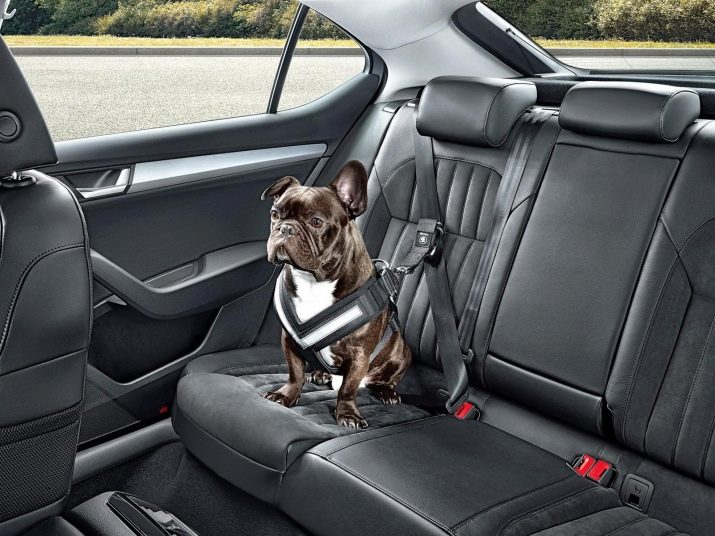
Puppy
The whole process of teaching a puppy to a leash can be divided into several simple steps. The duration of this or that stage depends not only on the skills of the owner or trainer, but also on the breed of dogs, because there are lego-trained and difficult-to-train dogs. The stages of training will be like this.
- Adaptation... For the owner, this is the purchase of suitable accessories: a collar and leash, and for the pet, this is an acquaintance with ammunition. The doggie should sniff new things, but never gnaw or play with them. Acquaintance with the ammunition is an important stage for the puppy, because it is here that it should be indicated that it is impossible to play with it, but this is something interesting and convenient.
- Preparation... Training should begin with getting to know the collar and only then add a leash, because at first the puppy will be curious about what kind of new thing they brought him, and what can be done with it. It is impossible for this thing to become an enemy for the dog or cause unpleasant associations, therefore, in the first days, you should put on the collar for literally a couple of minutes, gradually increasing this time every day. In this case, you can distract the puppy from the accessory and play with the pet, as well as make sure that he does not play with the ammunition and does not try to chew on it. Then, after several days of accustoming to the new harness, you should leave the accessory put on the puppy for a little longer.
- Workout at home. Once the dog is accustomed to the collar, you can move on to home training.Now you should attach the leash to the collar and walk with the puppy around the house, while you can use a training leash or a light rope to gradually prepare the puppy for a real leash. After that, you can move on to the present, and it is desirable that at first it was no more than 2 meters long. The main task is to teach the pet to walk on a leash in familiar terrain, and the owner needs to walk with the pet throughout the house, and, if possible, already at this stage, teach the pet the command "next" or "stop".
- Exit to the street. When the doggie is accustomed to the new ammunition and walks well with you at home, then you can try to take him outside. The main rule when going outside with a pet is to do everything calmly, do not pull the puppy by the leash, when you need to stop and control its movement, walk next to the pet.
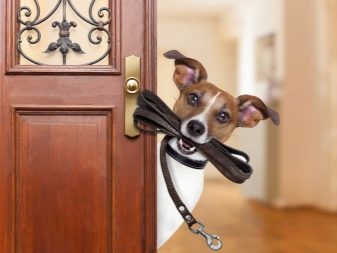
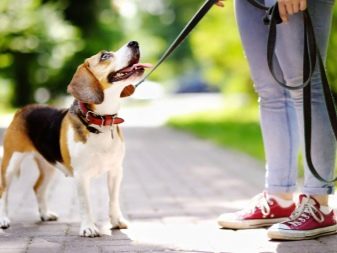
Training a puppy is not a difficult task, you only need time, desire and small expenses. But with an adult dog, the situation is quite different.
Adult dog
The stages of training are exactly the same as when training a puppy, but there are several important features worth knowing:
- leash length for an adult dog should be more than for a puppy (6-8 meters);
- the training period for an adult dog may take longer than for a puppy, so in this case it is especially important to stay calm and find a common language with the pet;
- it is better to train the dog in advance with the commands "next", "sit", "stop" so that an adult dog can be controlled on the street;
- the selection of ammunition should be approached thoroughly, because an adult pet can be difficult to restrain.
Do not be afraid that the dog is already an adult, the learning process is not much more difficult than for a puppy. Moreover, at 3 months, each dog undergoes the first vaccination, so she needs walks.
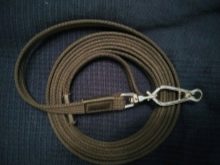
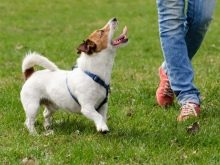
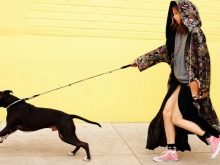
Frequent mistakes
Many owners make mistakes when training their dogs because they cannot follow simple rules. Do not forget that the dog is not guilty of anything, he is simply interested in what is happening, and this interest should always be warmed up and not cause a lot of inconvenience to the dog so that it does not become afraid of the leash.
Major mistakes:
- rudeness, harshness, abuse and assault - with such an attitude, the dog will never want to wear ammunition;
- the presence of strangers and the creation of uncomfortable conditions at the initial stages of training;
- wrong choice of ammunition;
- rush, skip training steps, or be impatient;
- permission to play with a dog with ammunition;
- lack of treats and games with a pet.
If you avoid all the mistakes described, then the training process will not only bring pleasure to the pet, but it will not take you so much time either. Dogs are very quick-witted, so if they came to you as puppies, then it will be easy and even interesting to accustom them to a leash. And the result of this work will be the opportunity to walk with your pet, learn about the world and get to know other pets and their owners.
It is worth starting to familiarize your faithful friend with the street gradually and at first constantly be nearby, not letting the dog into prohibited places.
And when the dog gets used to the street and understands certain subtleties and dangers, then it will be possible to periodically let him go for independent walks, but at the same time he should be nearby.
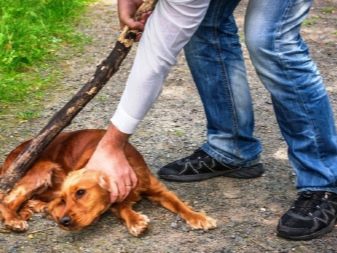
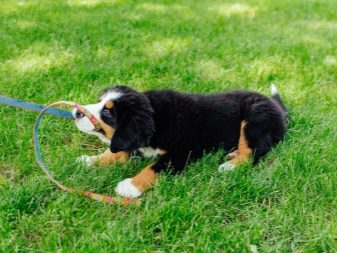
Additional advice from the pros will allow dog owners to properly train their pet on a leash.








